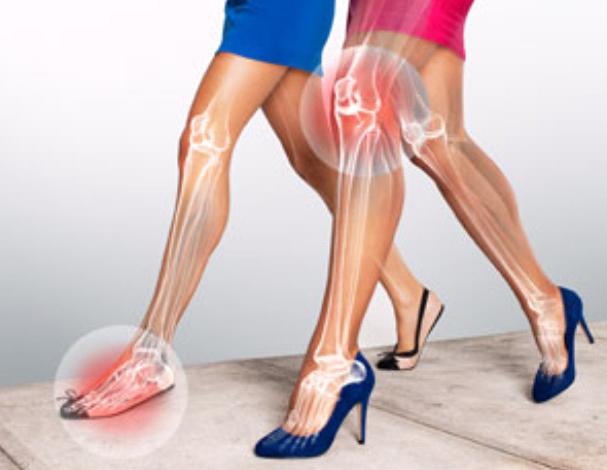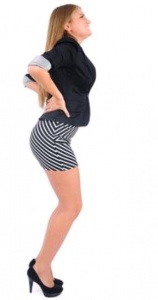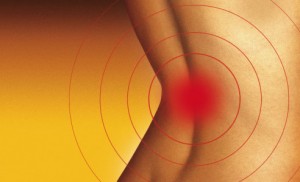 Way back in the 10th century, during the Tang Dynasty, a rather barbaric practice of Chinese foot binding of young girls, aged six years or younger, began. The feet of these poor children were wrapped in tight bandages and broken so they couldn’t grow any bigger. Why would such an atrocity be done you may ask? Well, binding the feet to make them appear tiny and delicate was practiced by wealthy families, as only wealthy families could afford to have the women of the house stay at home and not work. When you saw a Chinese woman with very tiny feet, you instantly recognized that as a status symbol representing prestige, beauty and wealth.
Way back in the 10th century, during the Tang Dynasty, a rather barbaric practice of Chinese foot binding of young girls, aged six years or younger, began. The feet of these poor children were wrapped in tight bandages and broken so they couldn’t grow any bigger. Why would such an atrocity be done you may ask? Well, binding the feet to make them appear tiny and delicate was practiced by wealthy families, as only wealthy families could afford to have the women of the house stay at home and not work. When you saw a Chinese woman with very tiny feet, you instantly recognized that as a status symbol representing prestige, beauty and wealth.
If you scoff at the above idea, consider this – the people of Western civilization, all these years later, think nothing of a woman teetering on heels so spindly that she can barely walk and with only a prayer she will not topple over and break a bone, or two, or three.
Women even joke about their infatuation with high heels – they don’t care how much pain and suffering they have to endure, because, after all, stilettos transcend them into a femme fatale. Even if women are short in stature, heels give them a commanding presence. Heels are a boost to any woman’s ego because suddenly their legs look long and shapely as opposed to short-heeled, sensible shoes which make them feel short and dowdy.
The media condones outrageous heel heights – for example, when “Sex and the City” was a top TV. show, women drooled over character Carrie Bradshaw’s collection of high heels from famous designers like Jimmy Choo, Christian Louboutin and Manolo Blahnik.
And, it isn’t just women liking high heels and feeling empowered when wearing them. Let’s face facts – men like that look too, so that’s also why women wear high heels.
To look good, women must suffer

Sure, those stilettos make you look like a million bucks, but what happens to your feet when you wear them (besides helping to put the podiatrist’s kids through college)?
Wearing high-heeled pumps encourages permanent health problems when you get older. Extended wear of high heels causes you to perpetually be bending your toes into an unnatural position, and that can cause anything from ingrown toenails to irreversible damage to leg tendons, and, not just the height of the heel in those killer stilettos is problematic – constantly cramming your toes into a narrow toe box is inviting nerve damage, bunions, overworked or injured leg muscles, osteoarthritis of the knee, plantar fasciitis and low back pain.
How do you feel about those pretty pumps
Those pumps also wreak havoc with your back. Not only do you risk damage to your feet and legs by insisting on teetering along on high heels (and that would be a shoe with a heel two inches or higher), but, for each step taken, your foot slides forward in your shoe, forcing the toes into the unnatural shape of the shoe and redistributing your weight incorrectly. Soon, the increased weight on your toes causes your body to tilt forward, and to compensate, you lean backwards and overarch your back, creating a posture that can strain your knees, hips, and lower back. The change to your spine’s position puts undue pressure on the nerves in the back, eventually resulting in sciatica, a condition where nerves become trapped, triggering pain and numbness all the way down to the feet.
Over a long period of time, wearing only high heels, and not switching to short heels or flats occasionally, will shorten the muscles in your calves and in your back, leading to pain and muscle spasms. Often, a shortening of the Achilles tendon develops, since once the heel is pointed upwards, it tightens up. By that time that a woman tries to switch to flats to relieve the pain, she has probably developed plantar fasciitis, a painful condition where you cannot put weight on your heel or the bottom of your foot.

I hope you are now convinced to keep those pretty pumps and killer stilettos for special occasions only, and not risk damaging your spine, causing sciatic or putting pressure on sensitive nerves, just to look good. Are you already experiencing sciatica? If so, you need to consult with a top spine doctor here in Summit, New Jersey to see if you have sustained any permanent damage by not opting for a more sensible shoe.
Other beauty foibles
A woman thinks she must put her best face forward when she walks out the door. We won’t discuss cosmetics in this particular post, but beauty rituals women endure, even as simple as painting their fingernails and toenails or powdering their nose could be putting their good health at risk just to look good.
But, perhaps the biggest single sin that women might commit in order to look good, besides wearing high heels, is torturing their hair. The word “torture” is not as harsh as the chemicals that women use on their crowning glory on a regular basis.
Some examples are:
Permanent hair dyes which are bad news for your hair. Blondes have more fun, or so the advertisements say, and, who wants those unruly gray hairs springing out of their lovely locks, so why not “wash it away”? Most women are aware that permanent hair dyes cause permanent hair damage as long as the produce is used on a regular basis. It will cause the hair to be brittle and break off, and, aesthetically… nothing looks worse than the “skunk look” if hair is not dyed on a regular basis.
But, even worse than having new growth as ugly black roots on a blonde head, is the damage to your health by the regular use of hair dye, which is comprised of an active ingredient called methylene bis (2-chloroaniline). This component has been linked to bladder cancer, non-Hodgkin’s lymphoma, multiple myeloma, and acute leukemia (though these results aren’t definitive).
Clearly, it is better to embrace your natural hair color or just laugh away those gray hairs and stay safe, or consider using henna, which is mostly plant-based.
- Hair relaxers and perms may be hazardous to your health. It seems women are never satisfied with their hair – besides their hair color, it’s either too straight or too curly. So, the hairdresser has the perfect solution for the problem, and, of course, you are eager to choose it.
- A hair relaxer is the way to go if you have kinky hair or frizzies as your hair follicles will be smoother after this procedure. But, although a hair relaxer can soften coarse, tight curls, the product uses strong chemical compounds, among them, a type of lye that is very strong and harmful to your hair. Lye, in case you were not aware, is a component found in drain cleaner! Celebrities have been known to spend up to $500.00 for a Brazilian blowout, which is a hot trend in hair straightening, but, this trendy ritual has caused unexplained nosebleeds and breathing problems in women, which may due to the 10% formaldehyde component, which is a known carcinogen and allergen.
- A permanent or “perm” will work wonders if your hair lacks natural curl, thus getting a “permed wave”, as it is sometimes called, will add a little body and curl to your lifeless locks. Perhaps you are tired of sleeping on curlers that pinch your head, or spending countless hours twirling long locks around the barrel of a curling iron. Both tasks are a pain, and, face it – not everyone looks good in a Pixie cut. The permed wave process has been around since 1905 and involves using chemicals or heat applied to the hair. The procedure consists of rolling the hair into curlers, and thereafter heat or chemicals are applied. While a perm might beat sleeping on curlers or using a curling iron, perming can also severely damage the hair, and, the use of hydrogen peroxide can also result in serious burns, not to mention that a badly done perms may cause your hair to lose its normal elasticity, making it brittle, fragile, and prone to breakage. Perms may wreak havoc with your scalp as well, leaving it red, itchy and peeling. Other side effects of a perm include scalp damage from the potent chemical, ammonium thioglycolate chemical solution, and which side effects may include redness, itching, burning, and peeling.


